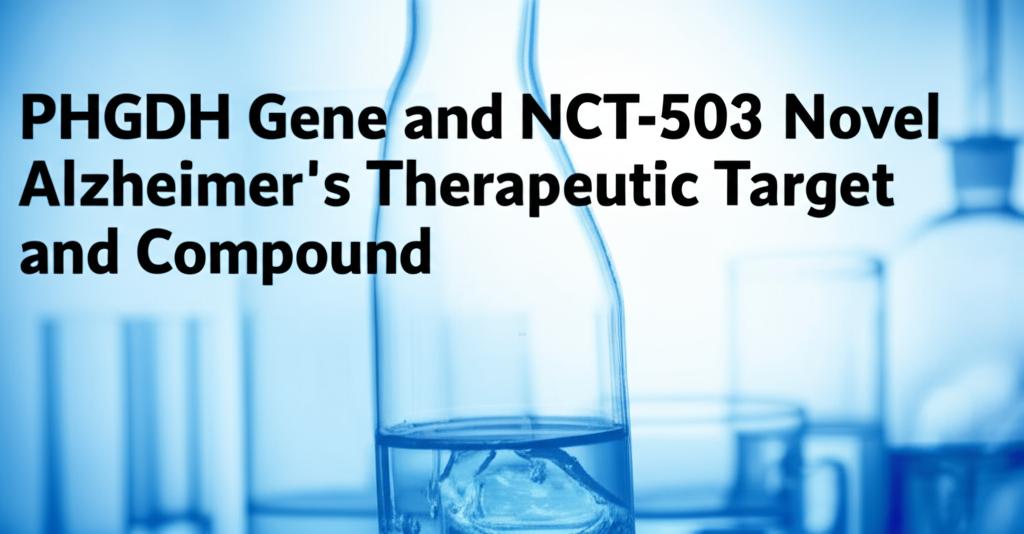Recent research has shed new light on the role of the phosphoglycerate dehydrogenase (PHGDH) gene in Alzheimer's disease, identifying it not just as a biomarker but as a potential causal factor. This discovery, aided by artificial intelligence (AI), has also pinpointed a promising therapeutic compound, NCT-503, for early intervention.
PHGDH's Dual Role in Alzheimer's PathogenesisPreviously, elevated levels of PHGDH protein and RNA were known to correlate with the advancement of Alzheimer's disease in human brains and were considered a potential blood biomarker for early detection. However, new studies reveal a more direct and causal role for PHGDH in the development of spontaneous Alzheimer's, which accounts for the majority of cases where no specific disease-causing gene mutation is present.
Researchers discovered that PHGDH has a previously unknown "moonlighting" function. Beyond its established enzymatic role in producing serine, an essential amino acid, PHGDH also acts as a transcriptional regulator. AI-powered analysis of PHGDH's 3D structure revealed a DNA-binding substructure. This allows the PHGDH protein to influence gene expression in brain cells, particularly astrocytes. Increased expression of PHGDH leads to the altered transcription of specific genes, including IKKa (inhibitor of nuclear factor kappa-B kinase subunit alpha) and HMGB1 (high-mobility group box 1). This disruption in gene regulation can trigger a cascade of cellular problems, including the suppression of autophagy (the cellular cleanup process) and acceleration of amyloid pathology, ultimately contributing to the early stages of Alzheimer's disease.
Experiments using mice and human brain organoids have demonstrated this causal link. Altering the expression levels of PHGDH directly impacted Alzheimer's disease progression: lower levels were associated with less disease advancement, while higher levels exacerbated it. This suggests that the amount of PHGDH protein produced, rather than just its presence, is a key factor.
NCT-503: A Novel Therapeutic CompoundWith the identification of PHGDH's detrimental regulatory role, the focus shifted to finding a way to intervene. The small molecule NCT-503 emerged as a promising candidate. Crucially, NCT-503 possesses several desirable characteristics:
- Selective Inhibition: It can inhibit PHGDH's newly discovered DNA-binding and regulatory function without significantly impacting its essential enzymatic activity of serine production, which is vital for brain health.
- Blood-Brain Barrier Penetration: NCT-503 is able to cross the blood-brain barrier, a critical feature for any drug targeting brain disorders.
- Upstream Intervention: By targeting this regulatory pathway, NCT-503 offers the potential to act upstream of amyloid plaque formation, potentially preventing or reducing their buildup, which is a hallmark of Alzheimer's. This is a departure from many current treatments that focus on clearing existing plaques, which may be less effective in later stages of the disease.
In preclinical studies using two different mouse models of Alzheimer's disease, NCT-503 demonstrated significant efficacy. Treatment with the compound led to:
- Alleviation of Alzheimer's disease progression.
- Substantial improvements in memory.
- Reduced anxiety-like behaviors.
- A decrease in amyloid-beta plaque load in the brain.
- All these benefits were observed without altering brain serine levels, confirming the targeted action on PHGDH's regulatory role.
While these results are promising, researchers acknowledge the limitations of current animal models, as no model perfectly replicates spontaneous Alzheimer's in humans. The next steps involve optimizing NCT-503 or its analogs to enhance pharmacokinetic properties and conducting Investigational New Drug (IND)-enabling studies with the FDA to pave the way for potential clinical trials in humans. The potential for an orally administered small molecule like NCT-503 is also a significant advantage over some current Alzheimer's treatments that require intravenous infusions.
This line of research, leveraging AI to uncover novel disease mechanisms and identify targeted therapies, represents an exciting new avenue in the fight against Alzheimer's disease, offering hope for earlier and more effective interventions.

